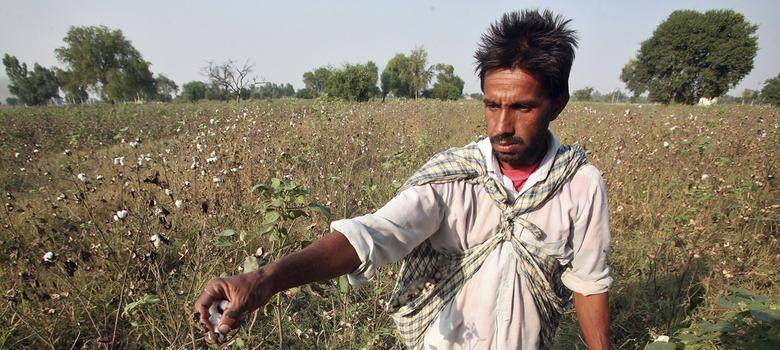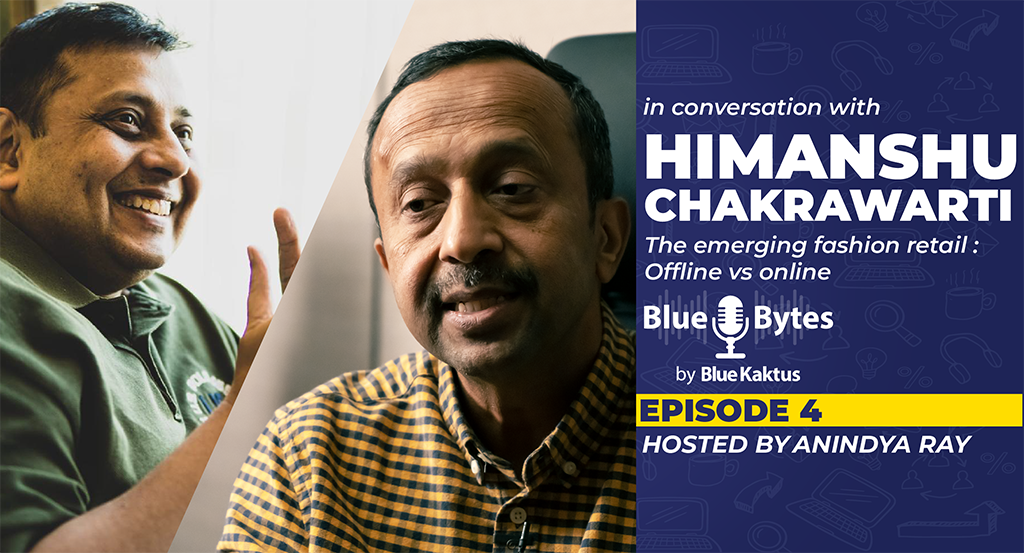What the INDIAN TEXTILE INDUSTRY needs to do to compete internationally
My previous article made me wonder about what the Indian textile industry needs to do, to compete internationally?
One thing that stood out in my mind immediately is
“Look beyond Obvious”.
 The Indian textile sector was traditionally a famous & widely appreciated one. International buyers specifically appreciated the creative workmanship & product outcome offered within stringent timelines.
The Indian textile sector was traditionally a famous & widely appreciated one. International buyers specifically appreciated the creative workmanship & product outcome offered within stringent timelines.
Over the past few years we seem to have lost our touch & international competitors who evolved better than us have taken away the market share.
In our industry, often we can sense that each of us work in isolation, not aligning with the immediate customers. Instead of aligning as per customers needs, we are trying to sell what is being made by us. In order to compete internationally SYNERGY (upward integration) from shop to crop is necessary. In my observation, it is the other way around.
For the Indian textile industry it's time to rejuvenate & COMPETE to CONQUER.This should be our approach against competition. This transformation should be across all verticals; each of is involved in the cycle should strive hard to compete internationally. “Look beyond Obvious” can help us compete against the international players.
Let’s review some of the key SHOP to CROP approaches we should initiate for the accelerated growth of Indian textile industry.
Brands & Apparel Retailers
International brands & apparel retailers from a very early stage focussed on a global vision. This is the reason behind leading international brands like H&M, M&S, UNIQLO & GAP growing outside the boundaries of their home countries. Today we see these brands presence globally, including India. On the other hand, the Indian brands & apparel retailers have not been able to achieve similar growth. We have very little exposure to the global markets & have left very less footprint till now barring a few exceptions.
Think Big, in order to compete internationally. Its time to establish our brands/formats across various parts of the world. The vision should be to make our brands the talking point in the global markets within the next 5 years. We have the potential & our offerings are in line with international players in all aspects.
Exporters/Factories
Offering “Flexibility” in manufacturing is going to be the key. The ability to make small & micro lot orders with better efficiency & agility will set us apart from the rest. Understanding your customer’s needs & buying patterns is another area which needs serious consideration. Investment in technology which in turn throws light on customer interests there by taking the lead in predicting trends & offering quick market solutions for your buyers. Prepare & alter the infrastructure keeping the present scenarios in mind rather than demanding or looking for larger runs based on infrastructures equipped with.
Other than the above stated there are 2 more important aspects to look at
- Offering fashionable product which is in line with international competitors
- Servicing the core products with consistency.
 In both the cases our Product & workmanship should speak for itself. In today's scenario the only way to achieve success & compete internationally is creating customer delight in every aspect. We should put ourselves in the customers shoes & assess whether the product offered by us is delightful. Accuracy at every stage of manufacturing, using the best quality raw material will help in building great products & it can attain customer delight with ease. I have seen several buyers who continue working with certain set of factories as they experience customer delight by working with them in terms of product outcome, fit, look, hand feel, cost etc.
In both the cases our Product & workmanship should speak for itself. In today's scenario the only way to achieve success & compete internationally is creating customer delight in every aspect. We should put ourselves in the customers shoes & assess whether the product offered by us is delightful. Accuracy at every stage of manufacturing, using the best quality raw material will help in building great products & it can attain customer delight with ease. I have seen several buyers who continue working with certain set of factories as they experience customer delight by working with them in terms of product outcome, fit, look, hand feel, cost etc.
Processing & Machinery Manufacturers
Having flexible machinery with advanced technologies in manufacturing at various processing stages will help us to compete internationally. Most of the textile machineries are meant for larger & bigger manufacturing, whereas the current market needs are for shorter & smaller runs to process. Even today many of the textile machineries are imported from other countries, which is being handled & managed by Indian fitters well. It shows that we have capabilities to compete with international manufacturers. It should be encouraged & applied in making these machineries with the latest technologies in our country with international standards & advanced features.
Keeping the current demand in mind, the process houses should be able to handle smaller runs with ease so that order serviceability does not become a challenge. With this “transformation” we can compete internationally & focus on exporting the machineries to various parts of the world after fulfilling our local needs.
Mills & Raw Material Suppliers
 Biggest difference between Indian manufacturers & international players is that they are good at offering “new products” in non-cottons. If we have to compete internationally we should increase our “non cotton capabilities”, focus more on offering sustainable products at competitive prices. This would include various blends of cotton with other fibres like rayon, modal, Tencel, polyester, nylon etc. sustainable manmade fibres like polyester out of recycled PET bottles with clean out come & advanced performance finishes.
Biggest difference between Indian manufacturers & international players is that they are good at offering “new products” in non-cottons. If we have to compete internationally we should increase our “non cotton capabilities”, focus more on offering sustainable products at competitive prices. This would include various blends of cotton with other fibres like rayon, modal, Tencel, polyester, nylon etc. sustainable manmade fibres like polyester out of recycled PET bottles with clean out come & advanced performance finishes.
In simple words we should evolve to making more fashionable fabrics. Increase our offerings in women’s wear fabrics which is the talking point in the world today & it should be in the above bases other than cotton. Shifting our focus from commodity cotton fabrics into specialty cotton fabrics (slightly better than regular) in cotton like mélange, slub, grindle etc., with competitive pricing & capability of making lesser quantities will yield desirable results.
Able to make small & micro lot orders with better efficiency & being agile. Invest in design studios which can make designs based on customer interests there by taking the lead in predicting trends & offering quick market solutions for retailers. Auto replenishment, & inventory management solutions for core & best sellers by holding fabrics are some of the key steps to compete.
Spinners
Invest more on R&D, do constant trials for continuous improvement in cotton quality (CQI) with certain land sizes as pilot projects, which in turn benefits the spinners productivity, with POC (proof of constraints) the same can be accelerated further.
Go beyond basic counts in cotton (above 50s) in large scale manufacturing.
Manufacturing finer counts, hybrid yarns, sustainable yarns, Bci, organic yarns manufacturing in large scale will make it a commodity available in the market at competitive prices. Focus on fibre blends, look at sustainable manmade fibres as an option. Offer more variations & fancy yarn solutions to market to build a differentiated offering.
Crop (Textile Farmers)
Need of the hour is “maximising” the production of better staple length cottons, sustainable cottons, 100% organic, BCI & Hybrid crop cultivations. The way forward is to make these a commodity readily accepted in the market. This will in turn lead to a higher demand & help achieve large scale productions.

Individuals - Textile Personnel
Depending on our levels & capabilities, we should start “adopting” a textile farmer or a community of textile farmers. We should extend our support towards their survival & revival of their livelihood by all possible means. This will make them feel secured & they will continue to focus more on harvesting. We can educate, create awareness, and support them in growing.
“To begin with I have decided to adopt one textile farmer with immediate effect”.
I would like to leave you all with this thought of “ADOPTION”. Give it a thought, I truly believe this will turn fortunes in favor of our industry.
After reading the above one could still feel that it is easier said than done. With the lack of support, infrastructure & policies it is extremely tough to compete & succeed against international competitors.
Involved PEOPLE like us can build an ecosystem of growth in any industry.
I have recently come across two classic examples of Indian companies who have succeeded against the competitors & left their footprints internationally in other segments. If they can succeed we can also as the scenarios are the same for every industry in INDIA. Click here to read the article.
Let’s “Look Beyond Obvious” at various stages of our industry. Let us apply ourselves better so that we can compete internationally & create a global footprint for the Indian textile industry.
RELATED TOPICS:#Sourcing,Textiles,Apparel,Fashion,design,retail,fabric,indian,textile industry,art,supply chain strategy,Ramesh Gunasekaran
Leave a comment
Our email address will not be published. Required fields are marked *







36 Comments
Ravindra ChawlaJul 26, 2020 at 22:46 pm
Hi Ramesh...Kudos to your decision on adopting a textile farmer as social responsibility. The journey from shop to crop and compete to conquer will only happen when we Look beyond Obvious. The thoughts along with solutions suggested by you at various stages of our industries for establishing Indian brand globally can be the stepping stone.
Ramesh.gJul 27, 2020 at 14:14 pm
Hey Ravi, glad to hear from you, thanks for acknowledging the same, yes change has to happen from individual end to create awareness to community.
Jagan PkJul 18, 2020 at 17:59 pm
Good Article with useful information.
Ramesh.gJul 27, 2020 at 14:09 pm
Dear Jagan, thanks.
MahendraJul 12, 2020 at 09:45 am
Very insightful and useful inputs, that's for taking the time to share your expertise.
Ramesh.gJul 13, 2020 at 12:03 pm
thanks mahendra for sharing your insights..
Rajat Kumar bhandaariJul 12, 2020 at 04:58 am
Hi Ramesh lot of valid points and a good assessment of where we stand and what needs to be done in order to grow indian textile and apparel industry.....
Ramesh.gJul 13, 2020 at 12:08 pm
Hi Rajat, happy to have your feedback, appreciate your efforts in taking time & sharing your views.
AshishJul 09, 2020 at 13:18 pm
Amazing insight by Ramesh. Great work !!
Ramesh.gJul 10, 2020 at 12:22 pm
Hi Ashish thanks for your feedback, happy to hear from you.
Arvind marlechaJul 09, 2020 at 10:42 am
Good work !!!
Ramesh.gJul 10, 2020 at 12:23 pm
thank you Arvind
Amit GulatiJul 08, 2020 at 23:53 pm
Hi Ramesh, you have listed quite a few valid points but as you said its easier said than done. We all have to realize that there has to be equal participation at every level of supply chain with highest responsibility lying with retailers as they lead the chain. There is a price for everything and suppliers are just losing the game under constant pressure of price reduction. Its a rat race which no one can win and suppliers will always cut corners to win this race. There is no price benchmarking for respective quality and cheapest can never be the best. There is a lot of work to be done but Its high time that retailers and buyers work to reduce their internal costs and share that saving with suppliers in return for demand of continuous improvement in manufacturing processes which ultimately is going to build up an Ecosystem of improved quality, delivery and price in long term.
Ramesh.gJul 10, 2020 at 12:30 pm
Thanks Amit for such a wonderful insights as feedback, i fully agree with your views & there should be a right comparison of apple to apple. everyone is equally responsible for sure. As you mentioned buyers & retailers have been taking great amount of measures in terms of managing the costs which is not visible to outside world.
Suriyaganesh GopalJul 08, 2020 at 23:12 pm
Nice one sir, each and every article of yours are very informative to sustain the current business.
Ramesh.gJul 10, 2020 at 12:31 pm
Hi Suriya, appreciate your efforts in terms of sharing the feedback, thank you once again.
T. SivarasuJul 08, 2020 at 11:24 am
Very nice article... Ramesh.G It is useful to all Textile related person...
Ramesh.gJul 08, 2020 at 15:49 pm
Hi Sivarasu, absolutely aim is that ony, thanks for your comments.
Ramesh RJul 06, 2020 at 17:08 pm
Nice article Ramesh..
Ramesh.gJul 07, 2020 at 14:38 pm
thank you ramesh
Dr.Viswa rajasekaranJul 06, 2020 at 16:35 pm
Nice Article. Reminds me Charles Darwin's phrase "Survival of the Fittest". As you said Indian Textile Industry should take all the steps suggested by you to sustain in this competitive market and to attract the new major brands who are shifting the focus from China to India. Best Wishes!
Ramesh.gJul 07, 2020 at 15:20 pm
thank you Dr.Viswa for your comments, well said by you. i would prefer to call it as " Survival of the Quickest" looking at the present scenario. hopefully we shall turn business fortunes in our favor with integrative approach.
BabuJul 06, 2020 at 16:10 pm
Hi Ramesh good article . Valuable suggestions. Keep writing .
Ramesh.gJul 07, 2020 at 14:40 pm
thank you Babu & happy with your feedback. will definitely continue writing....
VinayakJul 06, 2020 at 15:19 pm
Nice article Ramesh. It's hunger for self reliance. Suggest to split 3 to 4 articles to avoid feeling too lengthy or technically overloaded.
Ramesh.gJul 06, 2020 at 16:17 pm
thanks Vinayak, it's a valid suggestion. i too realized later stages, shall ensure to keep it short for future articles.
Capt V.PrabudasJul 06, 2020 at 13:15 pm
Very nice Mr.Ramesh .All the points especially adoption of textiles farmers ,getting new fibres, And one thing we can focus on children wear also
Ramesh.gJul 06, 2020 at 16:18 pm
thank you Prabudas, happy to have your feedback & your point is very well taken. we shall focus on kids wear segment too in a bigger way.
VISHAL GANERIWALJul 06, 2020 at 13:08 pm
Hi Ramesh Bang on with the need for addressing small order sizes and to basically leverage on strenghts of India and then branding the outcome. Ideas of synergy across various sub-system in the textile vertical are also a very good mention. Keep feeding us with such insights
Ramesh.gJul 06, 2020 at 16:21 pm
Hi Vishal, happy to have your feedback & thanks for your kind appreciation.
Vijey Kumar CJul 06, 2020 at 09:40 am
Beautiful thought process Ramesh. ???
Ramesh.gJul 06, 2020 at 10:38 am
thank you Vijey, people like us will turn thoughts in to action.
Pulkit PuniyaniJul 05, 2020 at 18:34 pm
Complied various important key factors In a single article..Great to read sir...
Ramesh.gJul 06, 2020 at 10:37 am
thanks pulkit, appreciate your comments
K S KarunakaranJul 05, 2020 at 16:28 pm
Very nice thought. Synergy is always a missing factor in our industry. Long term gains are always ignored here, so adoption is never a subject. We keep producing.....if market adopts we sell.... or we discount it and sell.... you are right. Product development should come out. Good article. All the best Bro...
Ramesh.gJul 06, 2020 at 10:36 am
Thank you Karunakaran for your meaningful thoughts, i agree that most of the time we tend to miss long term visions & gains. it's time to change our views.